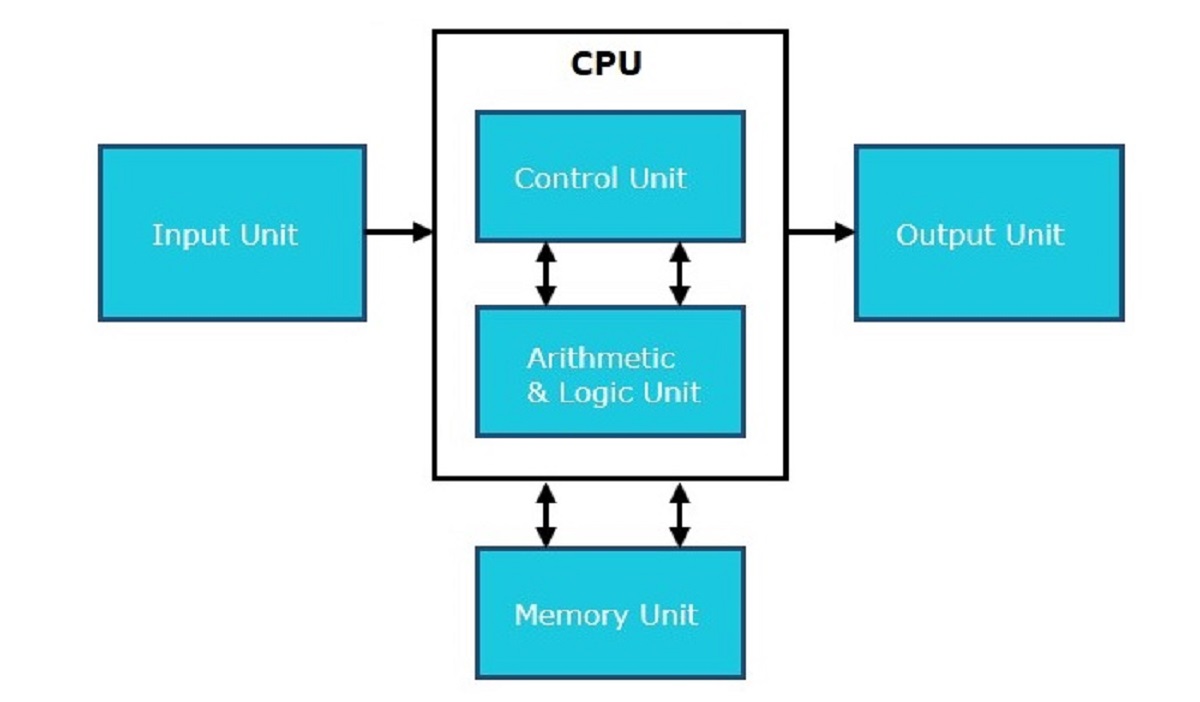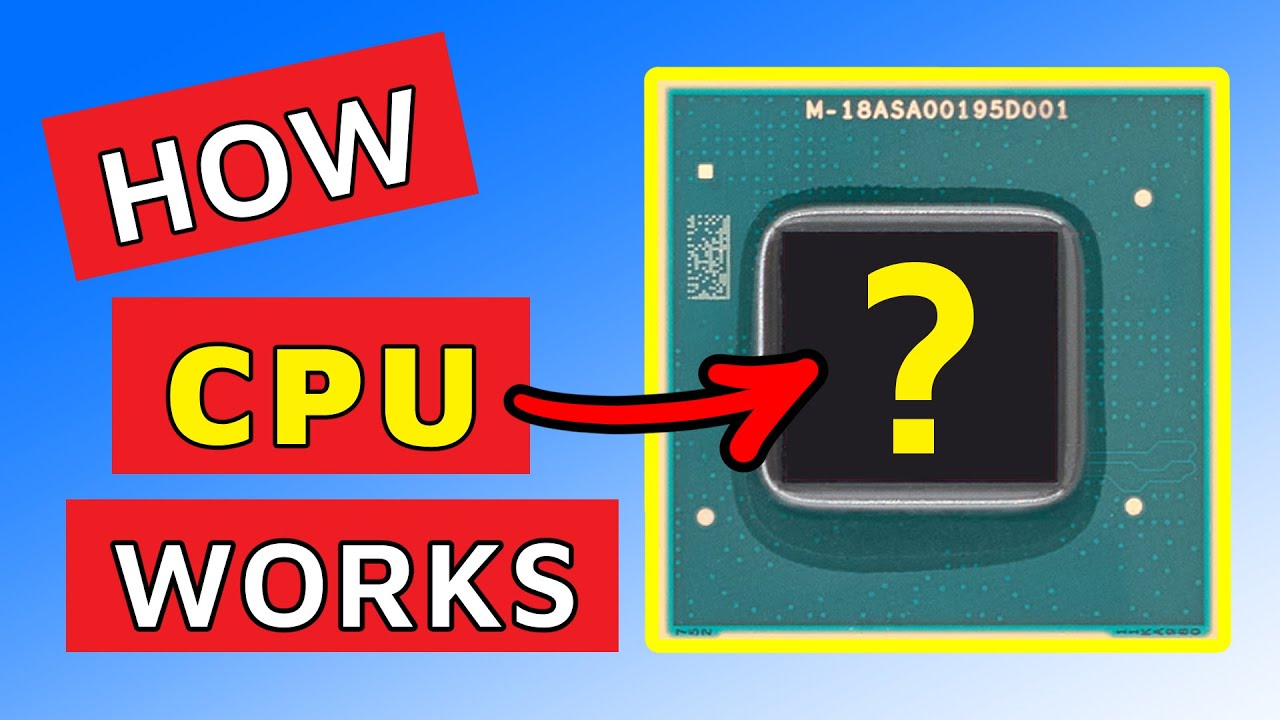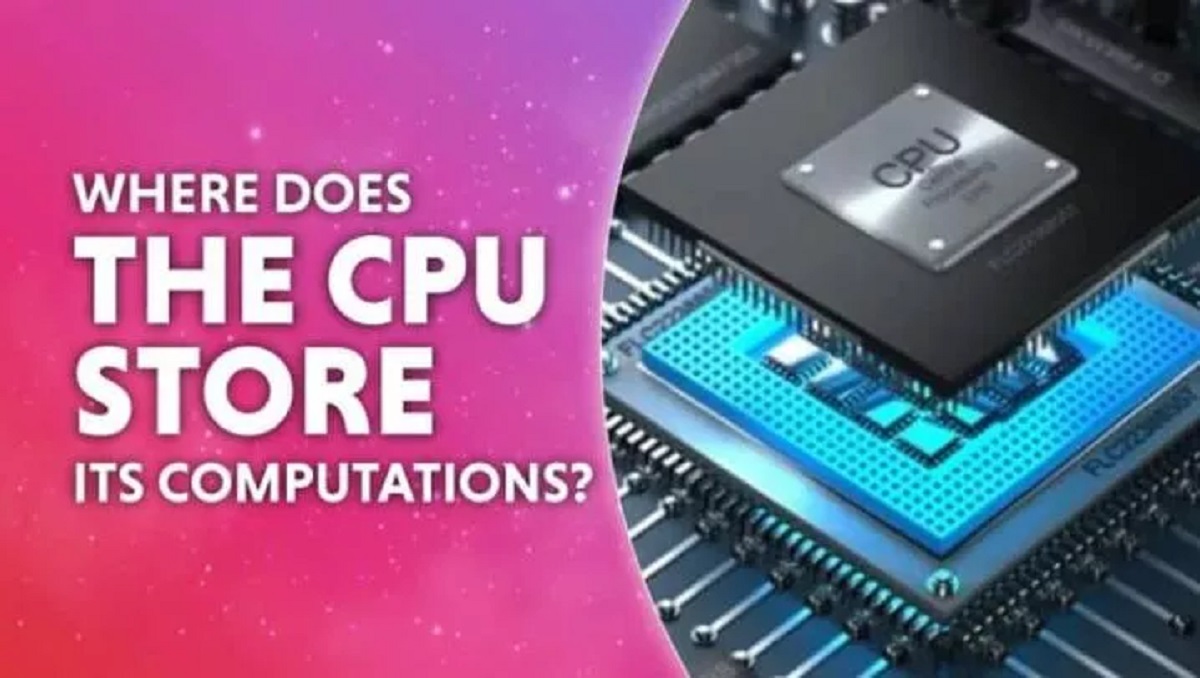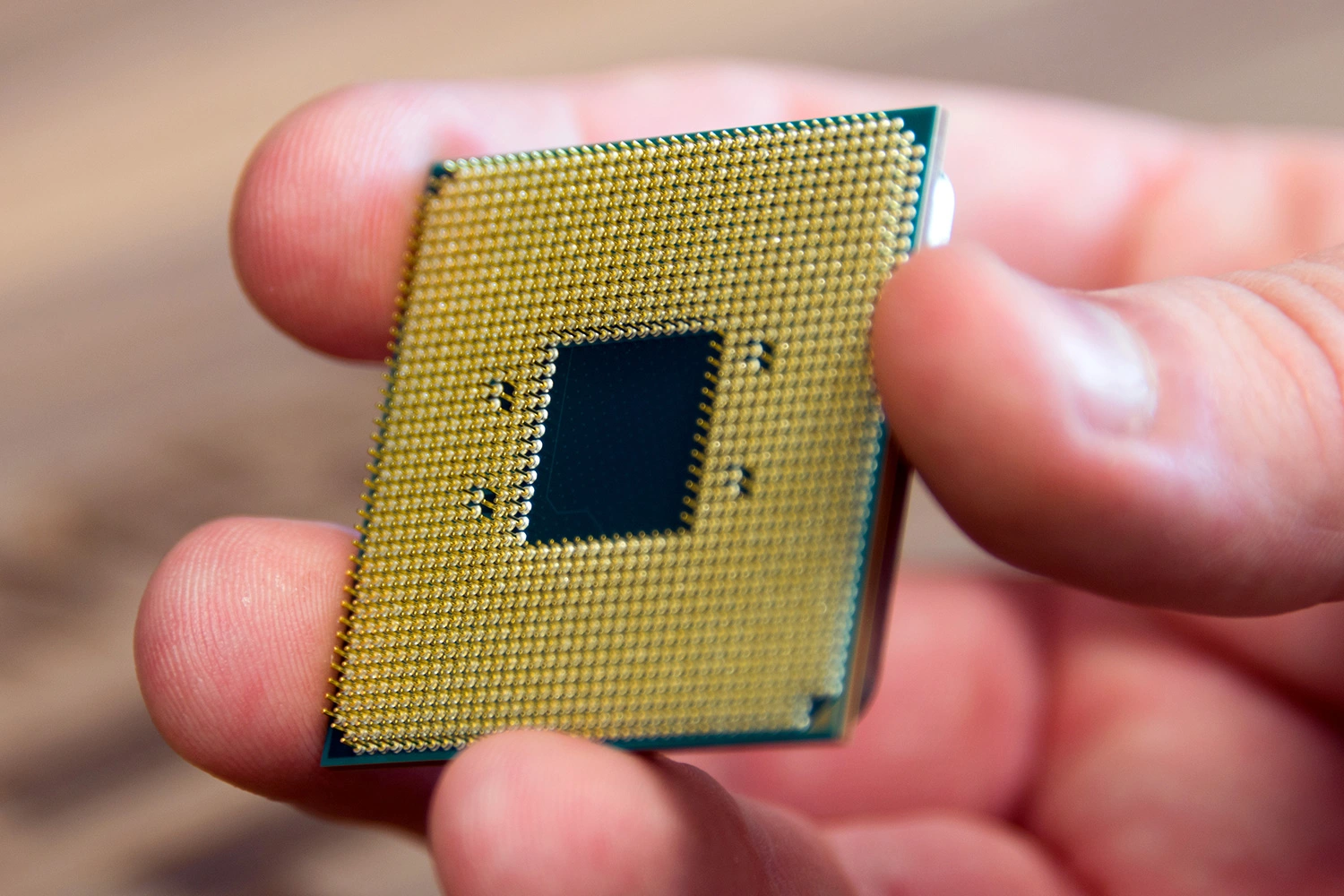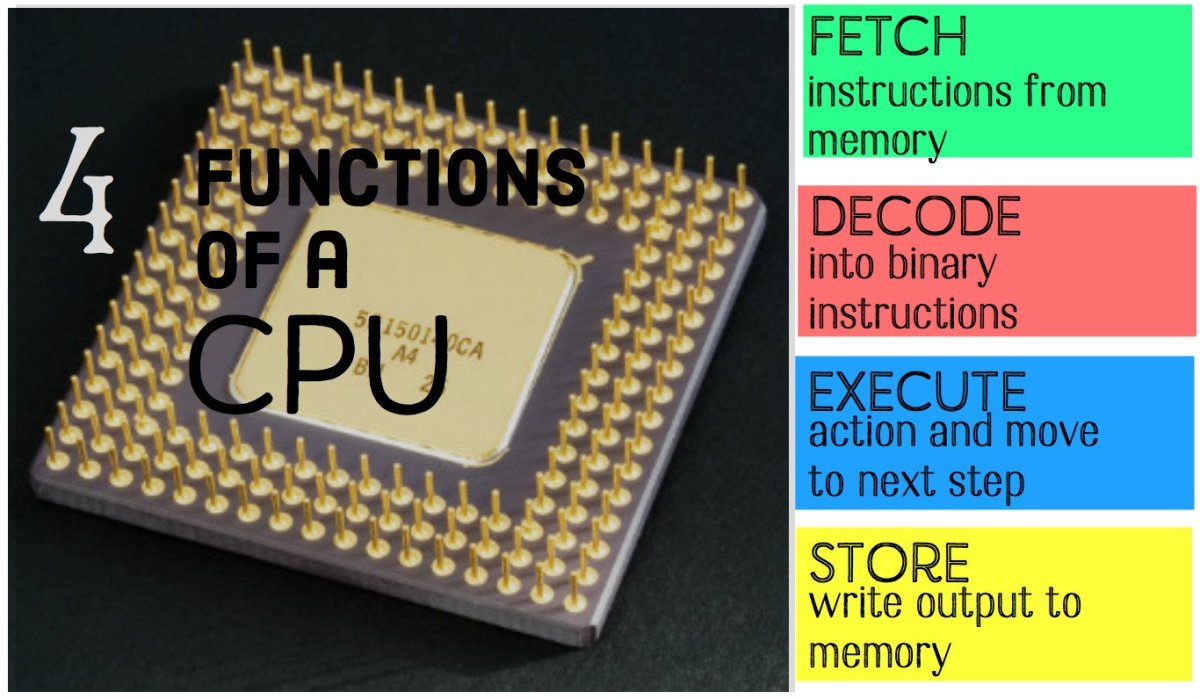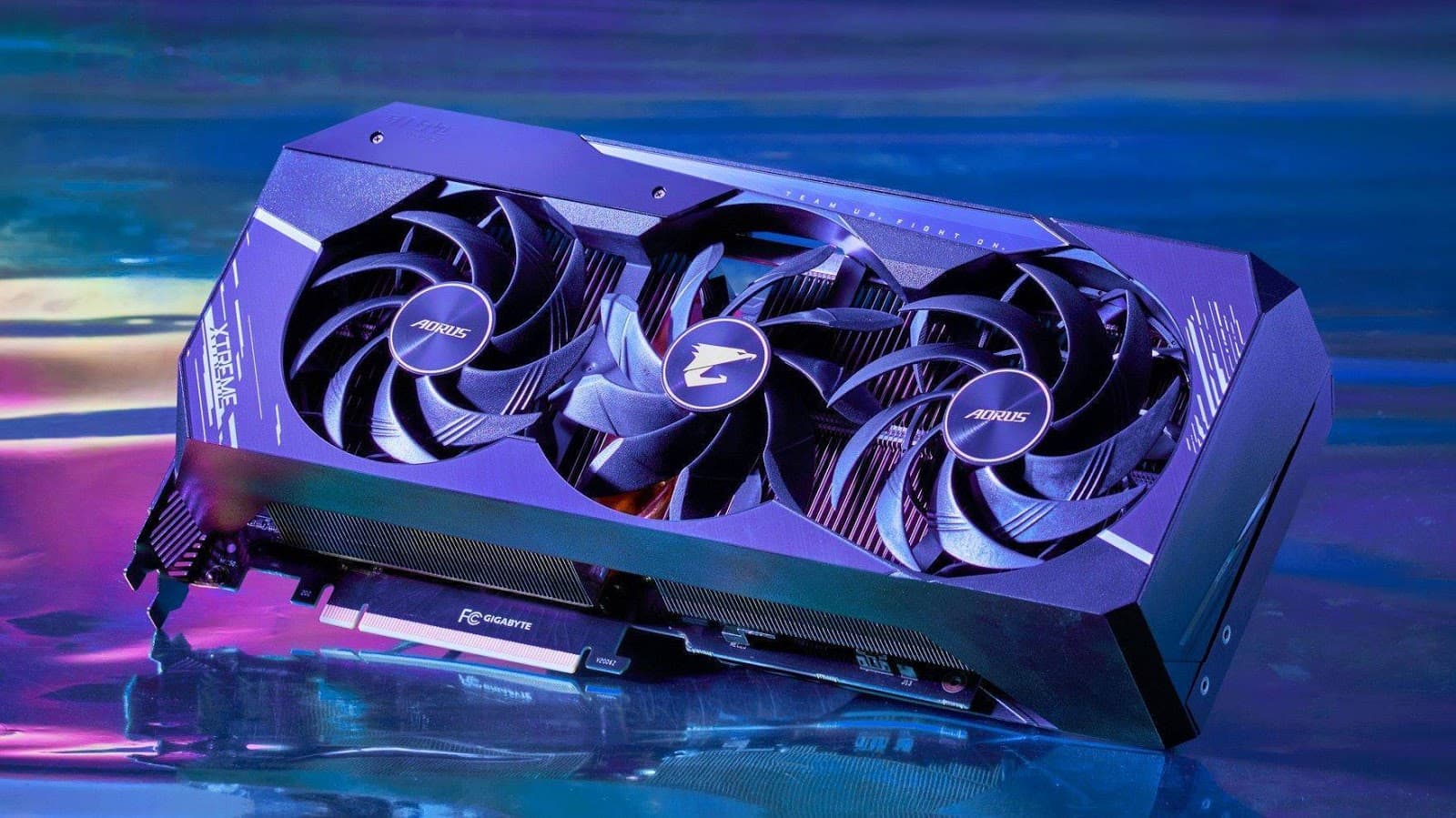Introduction
The Central Processing Unit (CPU) is a crucial component of a computer system that serves as the brain of the computer. It is responsible for carrying out various computational tasks and executing instructions to perform specific functions. Without the CPU, a computer would be unable to perform any meaningful operations.
The CPU is often referred to as the “brain” because it controls and coordinates all the other hardware components of the computer system. It processes data and instructions, performs calculations, and manages the flow of information between different parts of the computer.
In simple terms, the CPU is responsible for executing the instructions provided by software programs and ensuring that these instructions are carried out accurately and efficiently. It performs millions, or even billions, of calculations per second, allowing the computer to perform complex tasks in a matter of seconds.
Understanding the purpose and function of the CPU is essential for anyone interested in computers or technology. Whether you’re a casual user or a tech enthusiast, knowing how the CPU works can help you make informed decisions when purchasing a computer or troubleshooting any performance issues.
In the following sections, we will delve deeper into the components that make up the CPU, its functions, and why it plays a crucial role in the overall functioning of a computer system.
Definition of Central Processing Unit (CPU)
The Central Processing Unit (CPU) is the primary component of a computer system that carries out the instructions of a computer program. It is often referred to as the “brain” or “processor” of the computer.
The CPU is comprised of various electronic circuits, including transistors and logic gates, that manipulate and process data. It is responsible for performing basic arithmetic and logical operations, controlling the flow of data, managing storage and memory, and executing instructions.
At its core, the CPU functions as the central hub for all computational activities within the computer. It coordinates the activities of other hardware components, such as the memory and input/output devices, to ensure seamless operation.
The CPU operates on a clock cycle, with each cycle consisting of multiple stages in which data is fetched, decoded, executed, and stored. This series of operations is known as the Instruction Execution Cycle, which repeats continuously as long as the computer is powered on.
Modern CPUs are designed with multiple cores, allowing them to handle multiple tasks simultaneously. This enhances the overall performance and efficiency of the computer system.
In summary, the Central Processing Unit (CPU) is the fundamental component of a computer system that carries out the instructions of programs. It is responsible for executing calculations, managing data flow, and coordinating the activities of other hardware components. Without the CPU, a computer would be incapable of performing any meaningful tasks.
Components of a CPU
The Central Processing Unit (CPU) consists of several components that work together to execute instructions and perform calculations. These components play a vital role in the overall functioning of the CPU. Let’s explore the key components of a CPU:
- Control Unit: The control unit is responsible for directing the flow of data and instructions within the CPU. It coordinates the execution of instructions, ensuring that they are carried out in the correct order.
- Arithmetic Logic Unit (ALU): The ALU performs arithmetic operations, such as addition, subtraction, multiplication, and division. It also handles logical operations, such as comparisons and Boolean operations.
- Registers: Registers are small, high-speed storage units within the CPU that store data and instructions temporarily. They provide quick access to frequently used data, enhancing the efficiency of the CPU.
- Cache Memory: Cache memory is a high-speed memory that stores frequently accessed data and instructions. It resides closer to the CPU than main memory, allowing for faster data retrieval and improved system performance.
- Bus Interface Unit (BIU): The BIU is responsible for managing communication between the CPU and other components of the computer system. It transfers data and instructions to and from memory, peripherals, and other devices.
- Instruction Decoder: The instruction decoder decodes the instructions fetched from memory, converting them into a format that the CPU can understand and execute.
These components work together seamlessly to ensure the efficient execution of instructions and the smooth functioning of the CPU. The control unit coordinates the activities of the ALU, registers, cache memory, bus interface unit, and instruction decoder, allowing the CPU to perform its tasks effectively.
Understanding the components of a CPU is essential for comprehending how the CPU carries out complex operations and executes instructions. Each component plays a crucial role in the overall functioning of the CPU and contributes to the overall performance of the computer system.
Function of the CPU
The Central Processing Unit (CPU) serves as the brain of a computer system and performs a variety of functions essential for its operation. Let’s explore the key functions performed by the CPU:
- Instruction Execution: The CPU executes instructions provided by software programs. It fetches each instruction, decodes it, executes the necessary operations, and stores the results. This process is known as the Instruction Execution Cycle.
- Data Processing: The CPU carries out various calculations and manipulations on data. This includes performing arithmetic operations (such as addition, subtraction, multiplication, and division) and logical operations (such as comparisons and Boolean operations).
- Memory Management: The CPU manages the flow of data between different types of memory, such as the main memory (RAM) and cache memory. It retrieves data from memory and sends it to the appropriate components for processing.
- Control of Peripherals: The CPU controls the communication and interaction between the computer system and peripheral devices, such as keyboards, mice, printers, and external storage devices. It coordinates the transfer of data between the peripherals and the rest of the system.
- Interrupt Handling: The CPU handles interrupts, which are signals that interrupt the normal flow of program execution. When an interrupt occurs, the CPU suspends the current task, responds to the interrupt request, and then resumes the interrupted task.
- Scheduling and Multitasking: The CPU is responsible for scheduling tasks and managing the execution of multiple tasks simultaneously. It allocates processor time to different programs or processes, ensuring efficient multitasking and optimal system performance.
By performing these functions, the CPU enables the computer system to execute programs, process data, access memory, and communicate with peripheral devices. Its efficiency and speed greatly impact the overall performance of the computer.
Understanding the function of the CPU is crucial for anyone interested in computer systems and technology. It helps in troubleshooting performance issues, optimizing system resources, and making informed decisions when upgrading or purchasing a new computer.
Execution of Instructions
The execution of instructions is a vital process performed by the Central Processing Unit (CPU) of a computer system. It involves a series of stages, including fetching, decoding, executing, and storing, which collectively enable the CPU to perform a wide range of tasks. Let’s explore each stage in detail:
- Fetching: The CPU fetches the next instruction from the memory. It determines the address of the instruction to be fetched based on the Program Counter (PC), which keeps track of the memory location of the next instruction to be executed.
- Decoding: Once the instruction is fetched, the CPU decodes it to understand the operation it needs to perform. The instruction may involve manipulating data, performing calculations, or transferring data between different components.
- Executing: After the instruction is decoded, the CPU executes the intended operation. This includes performing arithmetic or logical calculations, accessing memory or registers, and controlling the flow of data within the CPU and the rest of the system.
- Storing: Once the execution of the instruction is complete, the CPU stores the results in the appropriate storage location. This may involve updating registers, writing data to memory, or sending output to peripheral devices.
The execution of instructions is a continuous process that repeats for each instruction in a program. The CPU fetches, decodes, executes, and stores instructions one after another until the program is complete or interrupted. This sequence of operations is known as the Instruction Execution Cycle.
During the execution of instructions, the CPU interacts with other components, such as cache memory, registers, and peripherals, to gather data, perform calculations, and produce the desired output. The efficiency and speed of the CPU greatly impact the overall performance of the computer system.
Understanding the execution of instructions is crucial for software developers, system administrators, and computer enthusiasts. It helps in optimizing code, diagnosing performance bottlenecks, and gaining insights into the inner workings of a computer system.
Fetching
The fetching stage is a fundamental step in the execution of instructions performed by the Central Processing Unit (CPU) of a computer system. It involves retrieving the next instruction from the memory and preparing it for further processing. Let’s explore the process of fetching in more detail:
When the CPU is ready to fetch an instruction, it uses the Program Counter (PC) to determine the memory address of the next instruction to be fetched. The PC keeps track of the current execution point in the program and points to the memory location where the next instruction is stored.
The CPU sends a request to the memory controller, indicating the memory address to fetch the instruction from. The memory controller then performs a read operation and retrieves the instruction from the corresponding memory location.
The fetched instruction is temporarily stored in a special register called the Instruction Register (IR) within the CPU. The IR holds the binary representation of the instruction and prepares it for the subsequent stages of the execution process.
Once the instruction is fetched and stored in the IR, the PC is updated to point to the memory address of the next instruction to be fetched. This ensures that the CPU progresses to the correct instruction in the program during the next fetch cycle.
The fetching stage is crucial in the instruction execution cycle, as it sets the foundation for the subsequent stages of decoding, executing, and storing. It allows the CPU to retrieve the instructions sequentially from memory and ensure the correct order of execution.
Modern CPUs often employ advanced techniques, like prefetching, to optimize the fetch process. Prefetching involves predicting the next instructions that are likely to be fetched based on program structure and accessing them in advance, utilizing the principle of locality to enhance overall performance.
Understanding the fetching stage helps programmers and system designers optimize code and memory access patterns. It also provides insights into the inner workings of the CPU and its role in executing instructions efficiently.
Decoding
The decoding stage is a crucial step in the execution of instructions performed by the Central Processing Unit (CPU) of a computer system. It involves interpreting the fetched instruction and preparing it for execution. Let’s explore the process of decoding in more detail:
After the CPU fetches the instruction from memory and stores it in the Instruction Register (IR), the decoding stage begins. The IR contains the binary representation of the instruction, and the decoding process is responsible for interpreting this binary code into a form understandable by the CPU.
The decoding process involves dissecting the instruction and extracting various fields, such as the operation code (opcode) and operand values. The opcode specifies the type of operation the instruction is intended to perform, such as arithmetic, logical, or control operations.
The CPU refers to its internal control circuits and instruction set architecture (ISA) to determine the meaning and operation associated with the opcode. It matches the opcode to the appropriate control signals and circuitry within the CPU, preparing it for execution in the next stage.
In addition to interpreting the opcode, the decoding stage also handles other components of the instruction, such as registers or memory locations involved in the operation. It identifies the source and destination operands and determines how to access and manipulate them according to the instruction’s requirements.
The decoded instruction, along with any associated operands or values, is passed on to the next stage of the instruction execution cycle, which is the execution stage. In this stage, the CPU performs the actual calculations, data manipulations, or control operations specified by the decoded instruction.
The decoding stage is critical in ensuring that the CPU interprets and processes instructions accurately and efficiently. It allows the CPU to understand the operation to be performed, identify the necessary resources, and prepare the appropriate circuitry within the CPU for execution.
In modern CPUs, decoding can be a complex process, especially when dealing with advanced instruction sets and complex architectures. To optimize performance and improve efficiency, CPUs often employ techniques like microcode and pipelining to streamline the decoding process and enable faster instruction execution.
Understanding the decoding process is important for computer programmers and system designers. It helps in writing efficient code, optimizing instruction execution, and gaining insights into the inner workings of the CPU and its role in the overall execution of instructions.
Executing
The executing stage is a critical phase in the execution of instructions performed by the Central Processing Unit (CPU) of a computer system. It involves carrying out the operation specified by the decoded instruction. Let’s explore the process of execution in more detail:
Once the CPU has fetched and decoded the instruction, the executing stage begins. In this stage, the CPU performs the actual calculations, data manipulations, or control operations dictated by the decoded instruction.
The executing stage involves utilizing various components within the CPU, such as the Arithmetic Logic Unit (ALU) and the registers. The ALU is responsible for performing arithmetic operations, such as addition, subtraction, multiplication, and division. It also handles logical operations, such as comparisons and Boolean operations.
The execution of an instruction may involve accessing data from registers, memory, or input/output devices. The CPU retrieves the necessary data from the appropriate source and performs the intended operation on it, using the ALU and other dedicated circuitry.
The result of the execution is then stored in a register, memory location, or sent to an output device for further processing or display. The CPU updates the necessary registers, flags, or status indicators to keep track of the execution and to facilitate subsequent instructions.
In some cases, the executing stage may involve controlling the flow of instructions and altering the program counter (PC) to modify the sequence of execution. This allows for conditional branching, loops, and other control structures within the program.
The executing stage is performed repeatedly for each instruction in the program, enabling the CPU to perform complex operations, process data, and execute programs efficiently. The speed and efficiency of execution greatly impact the overall performance of the computer system.
Modern CPUs often employ advanced techniques, such as pipelining or parallel processing, to optimize execution and enable faster instruction throughput. These techniques allow the CPU to execute multiple instructions concurrently, enhancing system performance.
Understanding the executing stage is essential for computer programmers, system designers, and anyone interested in the inner workings of a computer system. It provides insights into the actual computation and operation performed by the CPU and helps in optimizing code, diagnosing performance issues, and making informed decisions regarding hardware and software design.
Storing
The storing stage is a crucial step in the execution of instructions performed by the Central Processing Unit (CPU) of a computer system. It involves saving the results of the executed instruction in the appropriate storage location. Let’s explore the process of storing in more detail:
After the CPU has executed an instruction and generated a result, the storing stage begins. This stage is responsible for storing the result in a register, memory location, or sending it to an output device for further processing or display.
If the result needs to be stored in a register, the CPU updates the corresponding register with the computed value. Registers are small, high-speed storage units within the CPU that hold data temporarily, making it readily accessible for further calculations or branching decisions.
If the result needs to be stored in memory, the CPU writes the value to the specified memory address. This ensures that the result can be retrieved later when needed, such as in subsequent instructions or for data persistence.
Additionally, if the result needs to be sent to an output device, such as a display or a storage device, the CPU transfers the data to the appropriate output port. This allows for the results to be displayed or stored in a persistent medium for future retrieval.
The storing stage ensures that the computed results are properly saved and made available for further processing or user interaction. It also plays a role in completing the instruction execution cycle, as the execution of one instruction leads to either the fetching of the next instruction or the termination of the program.
Efficient and accurate storing of results is crucial for maintaining data integrity and ensuring the correct operation of a computer system. Incorrect or incomplete storage can lead to data corruption, unpredictable behavior, or malfunctioning of the system.
Modern CPUs often employ various memory management techniques to optimize the storing process, such as caching or buffering. These techniques improve system performance by effectively managing data transfer between registers, memory, and output devices.
Understanding the storing stage is important for computer programmers, system designers, and anyone interested in the inner workings of a computer system. It helps in optimizing code, managing data effectively, and ensuring the consistency and reliability of stored information.
Importance of the CPU in a Computer System
The Central Processing Unit (CPU) holds immense importance in a computer system as it serves as the core component responsible for carrying out essential operations and executing instructions. Here are several reasons highlighting the significance of the CPU:
- Vital Processing Functions: The CPU performs all the primary processing functions in a computer system. It executes instructions, carries out calculations, manages data flow, controls peripheral devices, and supervises the overall operation of the system.
- Execution of Software Programs: The CPU is responsible for executing software programs, including operating systems, applications, and games. It interprets the instructions from these programs and ensures their proper execution, enabling users to utilize the full potential of their computers.
- Fast and Efficient Processing: The CPU is designed to operate at high speeds and quickly process vast amounts of data. With advancements in technology, CPUs are becoming faster and more efficient, allowing for quicker program execution, complex calculations, and seamless multitasking.
- Control and Coordination of Hardware Components: The CPU acts as the control center of a computer system, coordinating activities between different hardware components. It manages memory access, initiates data transfers, and directs the flow of information between various components, ensuring smooth operation and efficient resource utilization.
- Enhanced System Performance: A powerful and capable CPU greatly contributes to overall system performance. It enables faster program execution, better responsiveness, improved multitasking, and quicker data processing, thereby enhancing productivity and user experience.
- Flexibility and Upgradability: The CPU’s modular nature allows for easy upgradability. As new and more powerful CPUs are developed, users can replace their existing CPUs to benefit from improved performance and new features, without having to replace the entire computer system.
- Support for Advanced Technologies: Modern CPUs incorporate advanced technologies, such as virtualization, encryption, and multimedia processing instructions. These technologies enhance security, enable efficient utilization of system resources, and support complex multimedia applications.
The CPU’s importance stems from its role as the central processing unit of a computer system. Its efficient operation and performance directly impact the capabilities and functionality of the system as a whole.
Understanding the importance of the CPU helps users make informed decisions when purchasing computers, upgrading components, or optimizing software. It enables better resource utilization, more efficient program execution, and improved overall system performance.
Conclusion
The Central Processing Unit (CPU) is undeniably the heart and brain of a computer system. It executes instructions, performs calculations, manages data flow, and controls the overall operation of the system. The CPU’s importance cannot be overstated, as it plays a vital role in enabling computers to function effectively and efficiently.
Throughout this article, we have explored various aspects of the CPU, including its definition, components, functions, and the execution of instructions. We have seen how the CPU fetches, decodes, executes, and stores instructions to carry out complex operations and computations. Each stage of the instruction execution cycle is integral to the smooth functioning of the CPU.
The CPU not only performs essential processing tasks but also coordinates the activities of other hardware components, manages memory access, controls peripheral devices, and ensures efficient resource utilization. Its speed and efficiency greatly influence the overall performance of a computer system.
Understanding the importance of the CPU enables users to make informed decisions when purchasing computers, upgrading components, or optimizing software. It also provides insights into the inner workings of a computer system, helping programmers and system designers optimize code, diagnose performance issues, and enhance overall system efficiency.
As technology advances, CPUs continue to evolve, becoming faster, more powerful, and more energy-efficient. These advancements open up new possibilities in fields such as artificial intelligence, machine learning, data analysis, and high-performance computing.
In conclusion, the CPU’s significance lies in its ability to handle complex tasks, execute instructions, and power the entire computer system. It is the driving force behind the seamless execution of software programs, the efficient processing of data, and the overall performance of a computer system.







